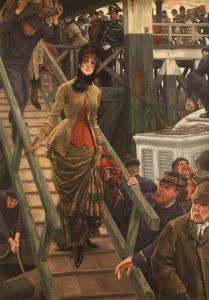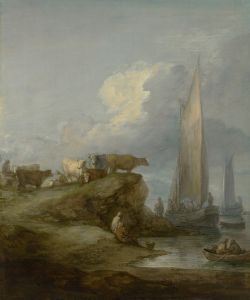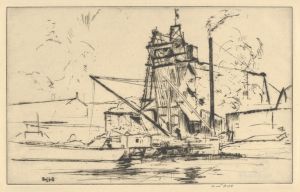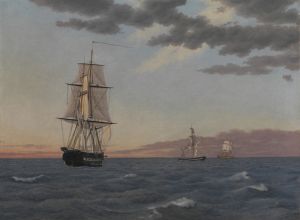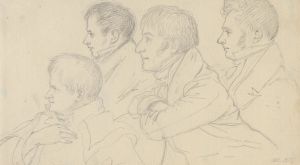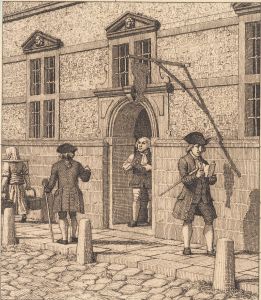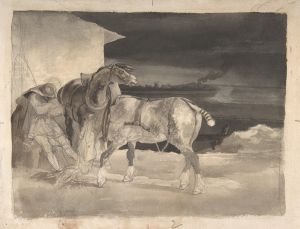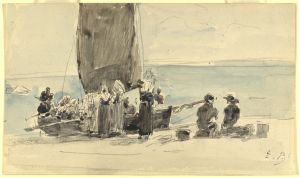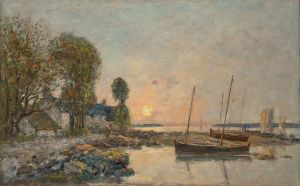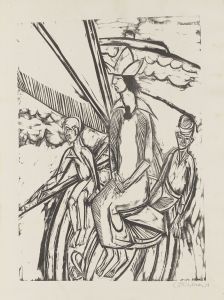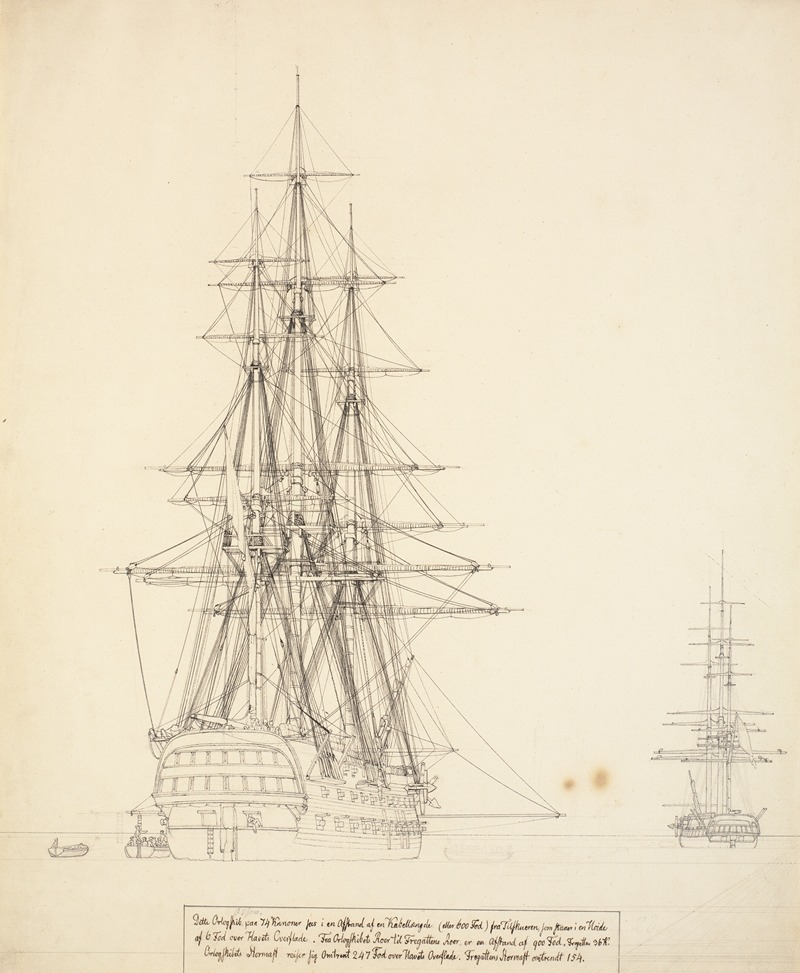
Det russiske linjeskib Asow og en fregat til ankers
A hand-painted replica of Christoffer Wilhelm Eckersberg’s masterpiece Det russiske linjeskib Asow og en fregat til ankers, meticulously crafted by professional artists to capture the true essence of the original. Each piece is created with museum-quality canvas and rare mineral pigments, carefully painted by experienced artists with delicate brushstrokes and rich, layered colors to perfectly recreate the texture of the original artwork. Unlike machine-printed reproductions, this hand-painted version brings the painting to life, infused with the artist’s emotions and skill in every stroke. Whether for personal collection or home decoration, it instantly elevates the artistic atmosphere of any space.
"Det russiske linjeskib Asow og en fregat til ankers" (The Russian Ship of the Line Azov and a Frigate at Anchor) is a painting created in 1828 by the Danish artist Christoffer Wilhelm Eckersberg, often referred to as the "father of Danish painting." Eckersberg is renowned for his meticulous attention to detail and his ability to capture light and atmosphere, qualities that are evident in this maritime artwork.
The painting depicts the Russian ship of the line Azov and an accompanying frigate anchored in the harbor of Copenhagen. The Azov was a prominent vessel in the Imperial Russian Navy, notable for its participation in the Battle of Navarino in 1827, a decisive engagement during the Greek War of Independence. The ship earned distinction in this battle, and its crew was celebrated for their valor. Eckersberg's painting captures the grandeur of the Azov, emphasizing its size and intricate rigging, as well as the serene setting of the Copenhagen harbor.
Eckersberg was known for his ability to combine precise realism with an artistic sense of composition. In this work, he employs a clear and balanced arrangement, with the ships positioned prominently in the foreground against a calm sea and a soft, luminous sky. The painting reflects Eckersberg's training in perspective and his dedication to accurately portraying the details of ships and their surroundings, a skill he honed during his studies and travels.
This artwork is an example of Eckersberg's broader interest in maritime subjects, which were a significant theme in his oeuvre. His works often celebrated the relationship between humans and the sea, a theme that resonated deeply in Denmark, a nation with a strong maritime tradition. The painting also serves as a historical document, offering a glimpse into naval architecture and the appearance of warships in the early 19th century.
Today, "Det russiske linjeskib Asow og en fregat til ankers" is part of the collection of the Statens Museum for Kunst (National Gallery of Denmark) in Copenhagen. It remains a testament to Eckersberg's skill as a painter and his ability to blend artistic beauty with historical and technical accuracy.





